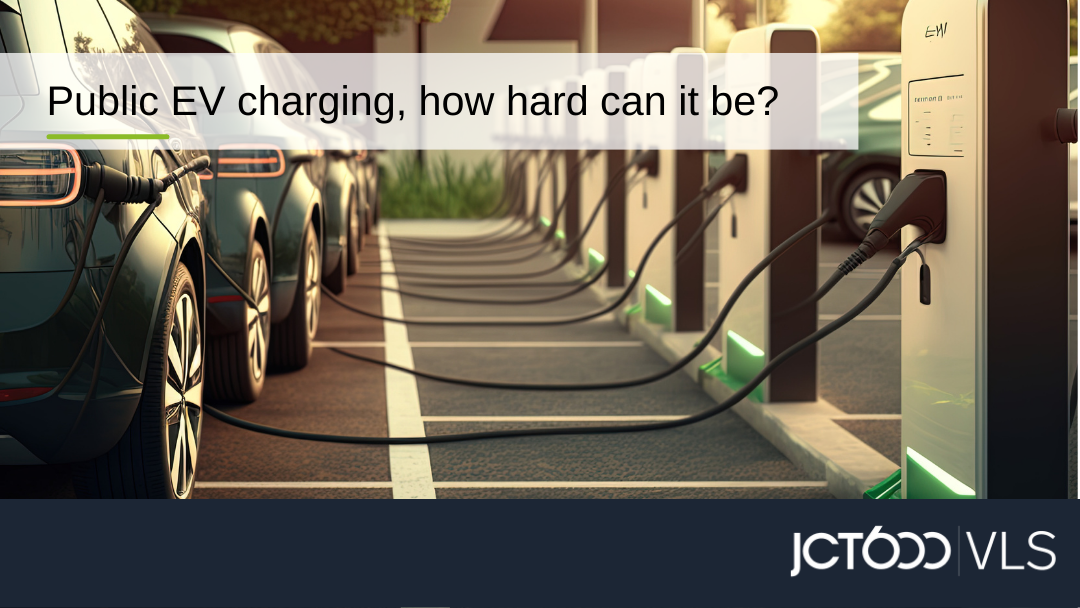By Paul Titchmarsh, Operations Director at JCT600 VLS
Forums, newsfeeds, tv, radio, medium of your choice. They are all currently full of stories about how the public charging infrastructure in the country is poor. Or how it hasn’t grown quickly enough for the number of newly registered EVs, leading to queueing at peak times. Or how it is far too often broken and chargers are out of action when you get there.
I’ve been an EV user for around two and a half years. OK, I don’t do mega mileage per year but I do a decent amount of long journeys that exceed the range of whatever car I may be driving, necessitating the use of a public charger. In several dozen visits to public chargers, I’ve queued less than 5 times.
Now (please don’t think I’m being smug here) some of this can be attributed to the fact that I plan before I go. I will read up on where chargers are on my route(s) and have alternative plans in mind. I also make a point of avoiding the main motorway service stations as these seem to have higher than average occupancy rates and failure rates.
I found it interesting at Christmas time to read about Tesla drivers having a stressful time finding (sometimes) large queues at Supercharger sites. I think there are a couple of key contributors to this set of circumstances. Firstly it was the Christmas holidays, so naturally, traffic levels are high and people that don’t do many long journeys are much more likely to do so. Having run a Tesla for a while, they have a foible that many drivers may not notice, and it negates a plus point of running a Tesla over any other EV. Only Tesla Supercharger sites feature in the integrated navigation system. Which is fine under normal circumstances. However given the time of year, etc, not normal circumstances. But Tesla drivers can charge anywhere, not just at Superchargers. However, unless you’ve planned beforehand it is unlikely the driver in question will know where their alternatives are.
So, what’s the solution to all this? At the moment, planning. And maybe software. Apps like A Better Route Planner and Zap-Map can do some of the grunt work, but proper infrastructure will always be the optimal answer.
This is where sites like Gridserve’s Electric Forecourts show how it needs to be done. The photos show their site at Norwich, which is a service station designed around electric charging points, and no sign of any fossil fuels.
The site has 22 x 350kw CCS chargers. This is as fast as anything can charge currently and with them all being super fast, customers spend less time charging, thus freeing them up more quickly. I have to say, the visit I had was seamless and painless. Just what you need, really.
This highlights the key points for me on where to look for chargers. Yes, there are many 50kw single chargers around and these are certainly better than no charger. However, sites with 6 + stalls and, in reality, 10 + stalls are the places to look for. As previously covered, the ability of these sites to move customers through is excellent – so should there be a queue, it should move relatively quickly.
However, always have a Plan B and C at least. One of these may be a single 50kw site. This helps to remove anxiety. You may stop at one site fully in the knowledge you can get to the next site, but charging there and then would equally do the job.
In a return journey situation, with an overnight, bit no ability to charge overnight – you may be able to fit the charge in at the end of the journey down rather than before the journey back. Please try to factor this into your plans and more of that anxiety will be left behind.
Chargepoint operators that I have used, that have good multi-stall operations (and good apps/websites to check facilities and availability) are Ionity, Instavolt, Fastned and MFG Group.
Ionity are the original 350kw chargers and these do get busy, but some of Fastned’s sites are comparable. These are currently mainly in the SE and Tyne and Wear areas with more coming. MFG are interesting as their sites can be a regular ICE filling station but with 6+ stalls of 150kw or more.
So my current advice is still to plan. Maybe this seems a pain, but less of a pain than driving around in a state of mild panic with under 20 miles range to spare.

